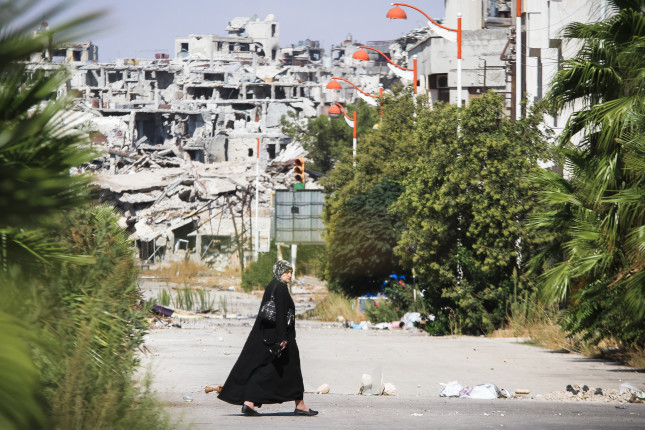-
Integrating Environmental Protection and Conflict Prevention: Risk, Resilience, and Community Solutions
November 8, 2021 By Shruti Samala“The world’s least resilient countries—when faced with ecological stress—are more likely to face civil unrest, political instability, social fragmentation, and economic collapse,” said Cynthia Brady, ECSP Global Fellow and Senior Advisor, at an event hosted by the Alliance for Peacebuilding. These “vulnerabilities are clearly mutually reinforcing, but some of the solutions are mutually reinforcing too,” said Brady. The critical challenge now is to bridge the gap between traditionally siloed communities of practice in conflict prevention and conservation.
More conflict, more ecological threat
According to the 2021 Ecological Threat Register produced by the Institute for Economics and Peace, the peacefulness gap between low peace and high peace countries is expanding. This trend “can function positively in the case of high peace countries, but it can also create these negative feedback loops…conflict can lead to confinement or displacement of communities, it can disrupt patterns of trade, it can lead to the abandonment of agricultural land, and the destruction of assets and loss of life,” said Michael Collins, Executive Director of the Americas at the Institute for Economics and Peace. Such drivers contribute to ecological vulnerability and the weakening of institutions, which in turn lead to increased conflict and environmental threat, said Collins.
Community-led conflict transformation
“This is a system-wide problem,” said Fracine Madden, Co-Founder and Executive Director at the Center for Conservation Peacebuilding. Environmental damage—as a “tangible, physical, and symbolic manifestation of societal conflict—” serves as a powerful entry point to addressing interlocking socio-political, economic, and ecological challenges, said Madden. Take, for example, the case of intergroup conflict between the Maasai and Hadza hunter-gatherers in Tanzania. Animosity between the Indigenous communities ignited when the government divided a tract of land between the two groups, said Madden. This obstructed each parties’ access to key natural resources located outside their jurisdiction, particularly during seasonal changes that have been rendered increasingly more unpredictable by climate change. A Maasai leader trained in conflict transformation capacity intervened in the dispute to facilitate peaceful dialogue between the Maasai and Hadza. They were able to broker a land sharing agreement to ease tensions. This example brings into sharp relief the connections between social conflict, climate change, said Madden, and the importance of on-the-ground capacity to address both.
Deploying forecasting to understand environmental vulnerability
What information do communities need to build resilience? Seasonal forecasting is a critical tool in reifying risk, said John Furlow, Director at the International Research Institute for Climate and Society at the Columbia Climate School. It helps practitioners and communities “apply experiences they have had in the past to the conditions they are likely to face in the next few months.” To do so effectively, working relationships between groups that need to use [forecast] information and people who are producing it are essential, said Furlow. “If we can break down the decision-making that is driving systems at either the national or the local levels then we can begin to be informed by those decision-makers what information would be useful, and then we can get to work on introducing some kind of forecast or data that could inform those decisions.”
Escalating conflict and climate change are multidimensional problems that necessitate multidimensional solutions, said Furlow. The upshot: the locus of change lies at points of intersection between compounding risks. Because of their systemic nature “everybody can contribute [to solution-building] independently of your level of expertise or your area of focus,” said Collins. “It is just a question of placing yourself where you are on that map and going from there.”
Read More:
- Nature-based Solutions Vital to Mitigating Conflict-linked Environmental Damage
- Environmental Security in Times of Armed Conflict
- Mosul Battle Shows Link Between War and Environmental Degradation, Says UN Agency
- Integrating Conflict Prevention and Climate Change in U.S. Foreign Policy and Development Assistance
Sources: Institute for Economics and Peace
Photo Credit: A woman walks near a residential area in the city of Homs, courtesy of ART Production, Shutterstock.com
 A Publication of the Stimson Center.
A Publication of the Stimson Center.




